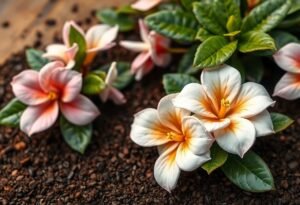Soil Properties Beneficial for Hydrangeas
One key element in growing hydrangeas is having the right soil. Different hydrangea varieties may have varying requirements, but generally, they prefer well-draining soils rich in organic matter. Ideally, the pH should range from 5.5 to 6.5. This range allows for better nutrient absorption, leading to healthy growth and stunning blooms.
The Importance of Watering
Both newly planted and established hydrangeas require proper hydration. Especially during dry spells, you must regularly water the soil to prevent root dehydration. Overwatering can lead to root rot and other health issues for your plants. If you want your hydrangeas to thrive, maintaining the right moisture levels in the soil is crucial.
Types of Fertilizers for Hydrangeas
Providing the right fertilizers is another critical aspect of ensuring soil loves hydrangeas. Your chosen fertilizers should be well-balanced and enriched with nutrients that help build healthy plant tissues. You can opt for organic fertilizers like compost or mineral options that act quickly. Thoughtful dosing of fertilizers is key to achieving vibrant blooms.
Mulching as a Soil Protection Technique
Mulching offers many benefits, one being the prevention of moisture loss from the soil. Using natural mulching materials such as straw, wood chips, or compost can help retain soil structure and minimize weed growth. This way, YOUR hydrangeas can fully utilize the soil’s resources.
Winter Protection for Hydrangeas
Winter weather can be particularly harsh on hydrangeas. It’s crucial to focus on autumn care to provide them with the right protection. Consider wrapping the plants in frost cloth and removing fallen leaves that could harbor diseases. Also, ensure proper fertilization before winter sets in to build their resilience.
Conclusion
Understanding how soil loves hydrangeas is the key to creating a delightful yet delicate oasis in your garden. Proper care, soil adjustment, and regular fertilization will ensure your hydrangeas grow strong and beautiful. Don’t wait — take care of your plants and give them what they deserve.
Disclaimer
This article is for informational purposes only and does not replace professional gardening advice.

















